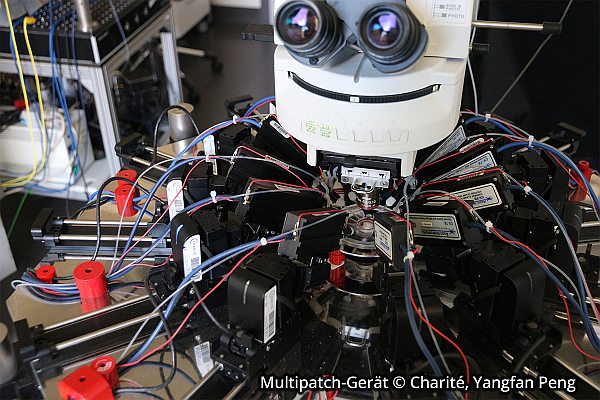Brain cells are wired substantially different in mice than in humans
- Press Release
- Dipl. Biol. Julia Radzwill
Groundbreaking findings turn longstanding knowledge about data processing in the brain upside down
Researchers at the Charité have analysed brain samples from voluntary donors using a technique that allows to examine the communication of nerve cells. They discovered that neurons tend to communicate in one direction in humans, while in mice, most signals run in loops. Previously, it was assumed - partly due to lacking data - that human signals flow in patterns similar to those in mice. This data is now available – and it does not just fill a gap, but also disproves this assumption. For the German organization DAAE, this is further proof that data from animal experiments cannot be prospectively translated to humans.
Directed by the Institute of Neurophysiology at the Charité in Berlin, brain samples from 23 epilepsy patients, who had undergone surgery as part of their treatment, were examined. The cerebral cortex tissue removed during this procedure was analysed by researchers, who came up with impressive new results. The previous understanding of the organization of the human cerebral cortexwas based on "mouse models", i.e. mice reduced to "models". In these, the signals from one nerve cell to the next are often sent back to the original cell. The flow of information in mice runs in loops. The human brain tissue shows a different pattern: the cells signal mostly in one direction. That results in a higher efficiency, as neurons can process more information independently at the same time.
For the study, state-of-the-art technology was employed: the patch-clamp-method uses an ultra-thin glass pipette that is attached to a single neuronal cell. In the study, an improved version with several glass pipettes was used to record the neuronal signals from ten neurons simultaneously. With these data, a network could be mapped and a computational simulation was created based on this human neuronal network. This was then probed with a task: Numbers had to be recognized correctly from an audio recording. The model based on the human data was able to recognize the numbers better than the model based on the mouse.
The results not only reveal important basic principles of human brain networks that enable a deeper understanding and thus therapeutic approaches but can also contribute to the optimization of AI networks.
"These results clearly demonstrate that neuronal processing in mice and in humans works very differently. Nevertheless, research is still mostly conducted on animal brains in order to derive knowledge for humans instead of relying on human-relevant techniques," says Julia Radzwill, biologist and research associate for DAAE. "The findings of the current study once again impressively show that brain research on animals has no benefit to humans, as it leads to false assumptions. What is needed are sustainable, human-based technologies that generate relevant results for humans."

